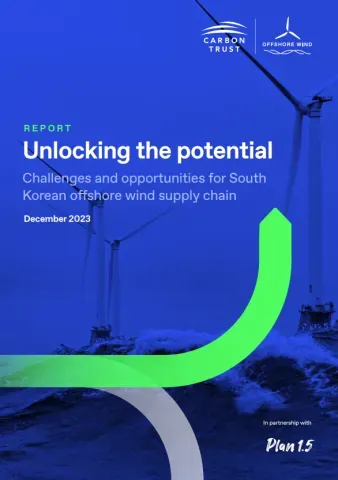Korean Air supply chain challenges are currently at the forefront of the airline’s strategic considerations, particularly as the industry strives for a robust recovery amid global disruptions. CEO Walter Cho has openly discussed the impact of ongoing supply shortages, which have inhibited the acquisition of critical planes and engines. Compounding these issues are the Trump tariffs, which have imposed additional costs and have complicated operational planning. Despite these hurdles, Korean Air is poised for a significant merger with Asiana Airlines, a move that Cho believes will bolster the airline’s competitiveness in the post-pandemic landscape. As travel demand rebounds, addressing these aviation supply chain issues remains paramount for the future success of Korean Air.
The operational hurdles faced by Korean Air are emblematic of broader challenges within the aviation sector, including critical supply deficiencies and regulatory pressures. In navigating these issues, the airline must contend with the recent merger with Asiana Airlines, which introduces complexities in integrating systems and resources. The influence of tariffs, particularly those enacted during Trump’s presidency, has further exacerbated costs and affected planning across the supply chain. Additionally, as the airline industry endeavors to recover from significant pandemic-related downturns, the focus on streamlining supply chains and enhancing operational efficiency remains crucial. With travel demand surging, how Korean Air addresses these operational challenges will likely define its competitive edge moving forward.
Understanding Korean Air’s Supply Chain Challenges
Korean Air is currently grappling with significant supply chain challenges that have affected its operations and growth potential. The airline industry has been consistently struggling with issues such as shortages of aircraft and engines, exacerbated by the lingering impacts of the global pandemic. Walter Cho, CEO and Chairman of Korean Air, emphasizes that these supply shortages represent a critical hurdle to the company’s operational efficiency. As travel demand surges once again, Korean Air’s ability to meet customer expectations relies heavily on resolving these supply chain issues promptly.
Furthermore, Korean Air’s supply chain dilemmas are compounded by external factors including fluctuating tariffs and geopolitical tensions. The Trump administration’s tariffs on various imports have posed an additional layer of complexity, affecting the cost structures of airlines like Korean Air. Addressing these hurdles is not merely a matter of logistics; it also plays a vital role in maintaining the airline’s competitiveness in an increasingly saturated market. Effective supply chain management is essential for Korean Air to navigate these challenges while preparing for its upcoming merger with Asiana Airlines.
Frequently Asked Questions
What are the main supply chain challenges facing Korean Air after the Asiana Airlines merger?
Korean Air is currently grappling with significant supply chain challenges, particularly highlighted by the ongoing shortage of planes and engines. As the airline prepares for its merger with Asiana Airlines, addressing these supply chain issues is essential for ensuring operational efficiency and market competitiveness post-merger.
How did Trump tariffs impact Korean Air’s supply chain operations?
Trump tariffs have significantly impacted Korean Air’s supply chain operations by increasing the cost of imported aircraft components and materials. The airline has had to navigate these tariff issues while planning for future growth, particularly in light of its ongoing merger with Asiana Airlines.
What steps is Korean Air taking to resolve supply chain shortages amid recovery in the airline industry?
Korean Air is proactively addressing its supply chain shortages by collaborating closely with suppliers and optimizing its procurement strategy. As the airline industry recovers, the CEO emphasized that overcoming these supply chain challenges is crucial for boosting operational capabilities and meeting rising travel demand.
How is Korean Air managing supply chain issues during the merger with Asiana Airlines?
During the merger with Asiana Airlines, Korean Air is focused on mitigating supply chain issues by enhancing communication with logistics partners and streamlining processes. By doing so, the airline aims to ensure a smooth transition and ongoing operational effectiveness despite current shortages.
What are the implications of aviation supply chain issues for Korean Air’s future operations?
Aviation supply chain issues pose serious implications for Korean Air’s future operations, including potential delays in fleet expansion and increased operational costs. The company’s CEO has acknowledged the importance of resolving these challenges to maintain competitiveness in a recovering airline industry.
| Key Point | Details |
|---|---|
| Supply Chain Shortages | Korean Air is experiencing shortages of planes and engines. |
| Impact of Tariffs | The tariffs imposed during the Trump administration have affected operations and future planning. |
| Merger with Asiana Airlines | Korean Air is preparing for a merger with Asiana, taking steps to manage supply chain issues. |
| Industry Recovery | Despite challenges, CEO Cho is optimistic about the airline industry’s recovery as travel demand increases. |
| Future Competitiveness | Addressing supply chain issues is vital for future operations and maintaining competitiveness. |
Summary
Korean Air supply chain challenges are prominent as the company grapples with shortages of critical aircraft components. CEO Walter Cho’s discourse highlights the ongoing impact of tariffs, particularly those associated with the Trump administration, on their operational strategy during the crucial merger process with Asiana Airlines. With increasing travel demand, there’s cautious optimism regarding recovery in the airline industry, however, addressing these supply chain inconsistencies remains essential for Korean Air’s competitive stance in the global market.



